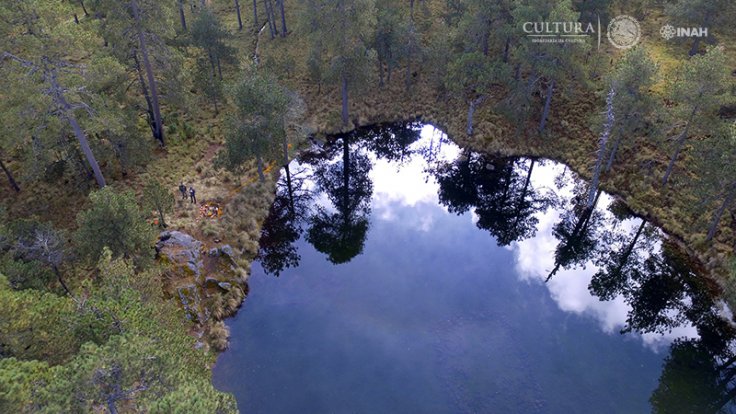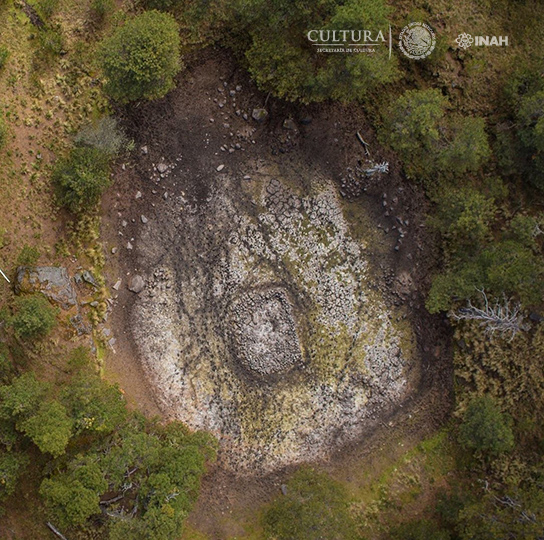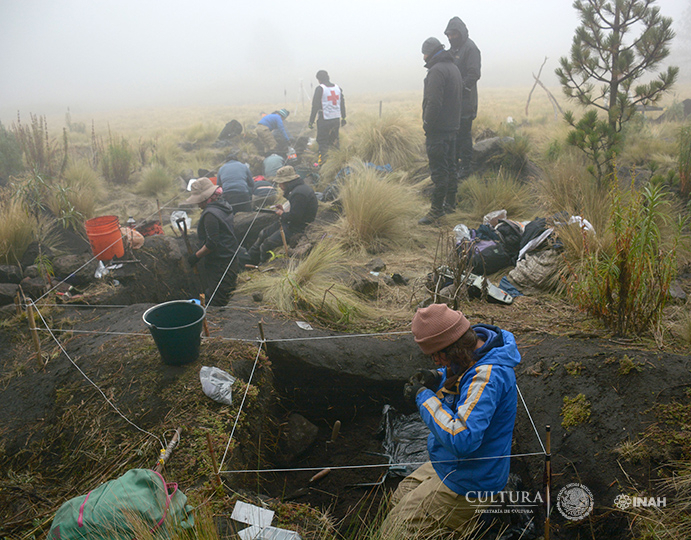
A stone shrine has been discovered at the foothills of the Iztaccihuatl volcano in Mexico which resembles a mini model of the universe. A team of archaeologists discovered this unique stone 'tetzacualco' or sanctuary in a pond at Nahualac.
The National Institute of Anthropology and History (INAH) also unearthed ceramic fragments, lithic materials, organic remains and lapidaries from the site. Reportedly, these materials are associated with Tlaloc, the Aztec rain god.

According to the researchers, the arrangement of the stones is like a tiny model of the universe, in which it seems as if the stones are floating rather than being placed on the bed of the pond. The whole structure is found at a height of 13,000 feet, on the side of the dormant volcano.
There are several beliefs in Aztec civilizations about the creation of the universe. One of them involves the crocodile-like monster Cipactli, from whose body the earth and sky were created. It is believed that the discovery may refer to this myth.

"The existence of a tetzacualco in the middle of a natural pond and the optical effect that occurs when the water mirrors, from which it seems that the structure emanates,suggests that the place is the representation of a primeval time and space, a miniature model of the universe," say researchers.
Iris del Rocio Hernandez Bautista, an archaeologist at the Subaquatic Archaeology Subdirectorate (SAS) of INAH stated that the water flowing inside that structure was regulated through certain channels in a certain way to cause the optical illusion of a mirror. It seemed as if the structure and the stones were floating on the water, which reflected its surroundings.

These visual effects and other arrangements in the site make the archaeologists assume that the Nahualac is meant to be a miniature model of the universe that depicts the beginning of the "mythical time-space".
The archaeological exploration covers an approximate area of 300 by 100 meters. A site about 150 meters southeast of Nahualac structure houses many natural springs and ceramic pieces with decorative structures, also attributed to the rain god.

"In this area, ceramic materials were identified on the surface, some of them identified as Coyotlatelco (750-900 AD), Mazapa (850 to 900 AD) and Tollan Complex (900-1150 AD)," said Bautista.
The scientists believe that this area had been dedicated to a community of people who worshipped nature. Objects including blades, slate pieces and things made of pink and gray shale have been found at the spot, along with many tripod bowls that seem to be arranged in a form of offering to an unknown god.
What other mysteries are hidden in this place, only further excavations and research will reveal.









